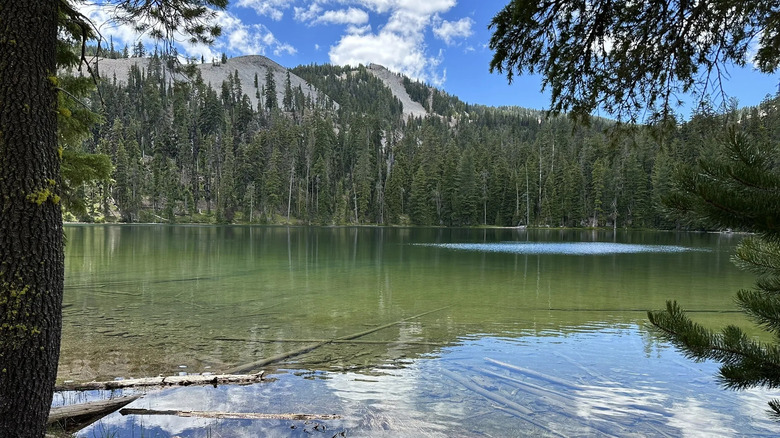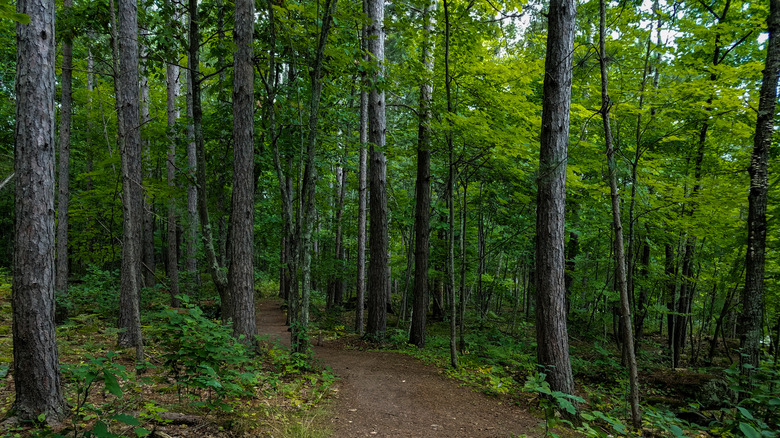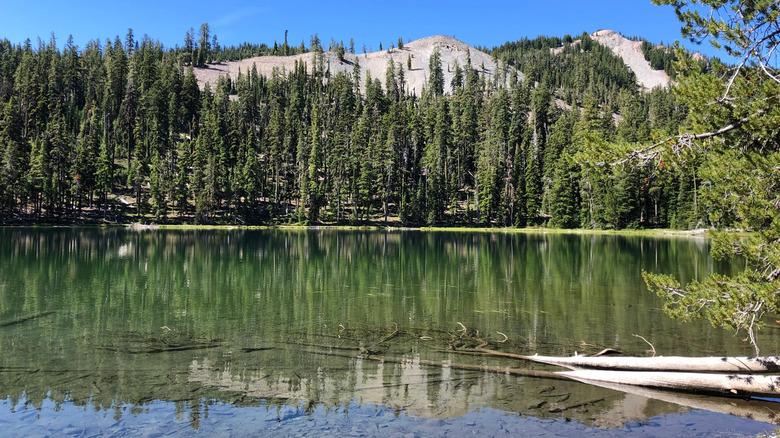A One-Of-A-Kind Oregon Haven To Camp, Fish, And Hike In Scenic Serenity Is Situated In The Remains Of A Massive Volcano
Within the vast expanse of Oregon's Fremont-Winema National Forest lies a wilderness that is shaped by both fire and ice. The Mountain Lakes Wilderness is a square preserve in the southern Cascade Range. While it now offers a scenic retreat for those seeking nature and adventure, its landscape was formed by ancient cataclysms.
Millions of years ago, a series of explosive eruptions gave rise to a single towering composite volcano that dominated the area. It rose 12,000 feet into the sky and stretched across 85 square miles. After a period of intense activity, the massive peak eventually collapsed and formed a large caldera. Snow and ice filled the sunken basin, and glacial forces slowly sculpted the rugged landscape. It carved out about 20 small alpine lakes that now shimmer across the land. These lakes offer picturesque views and prime spots for fishing. Surrounding trails and campgrounds invite visitors to stay, explore forested paths, and gaze at stars glistening in the night sky.
Exploring Mountain Lakes Wilderness' trails and lakes
Mountain Lakes Wilderness is 45 minutes west of Klamath Falls, Oregon's "City of Sunshine." Visitors can access the wilderness via three trailheads. These paths lead to the Mountain Lakes Loop Trail, the main route that circles the caldera rim. From the north, the Varney Creek Trail offers the easiest ascent, with a 4.4-mile hike winding through stands of pine and fir. To the west, the Mountain Lakes Trail spans 6.3 miles while the Clover Creek Trail from the south offers a slightly shorter 4.3-mile approach. Parking is limited at all three trailheads, and there's no potable water available; hikers should plan accordingly for their journey.
Once on the Mountain Lakes Loop Trail, visitors can enjoy lush greenery and quiet waters. The 8.2-mile loop around the caldera's edge offers access to several stunning lakes, including Lake Como, Eb Lake, Zeb Lake, and Lake Harriette. These crystal-clear waters are perfect for fishing, swimming, and relaxing along the lakeside.
Planning a trip to Mountain Lakes Wilderness
For those wishing to spend the night, camping is allowed throughout Mountain Lakes Wilderness, although there are no developed campgrounds. Dispersed camping is permitted near the lakes and along the trail. Visitors should follow Leave No Trace principles. This includes packing all trash, storing food securely, and checking current fire restrictions before starting any campfires.
The best time to visit is between spring and early autumn, when wildflowers bloom, wildlife is active, and the landscape is at its most vibrant. However, this time of year also brings plenty of mosquitos, especially before August. It's important to pack an effective insect repellent. Visitors in a pinch can even use a splash of vodka, which helps banish bugs from campsites, plus skipping sugary drinks can help reduce bites. Before heading home, hikers should consider extending their adventure with a stop at nearby Crater Lake National Park. About a 40-minute drive north, it's home to the deepest lake in the U.S (which was also formed by a volcanic eruption).


